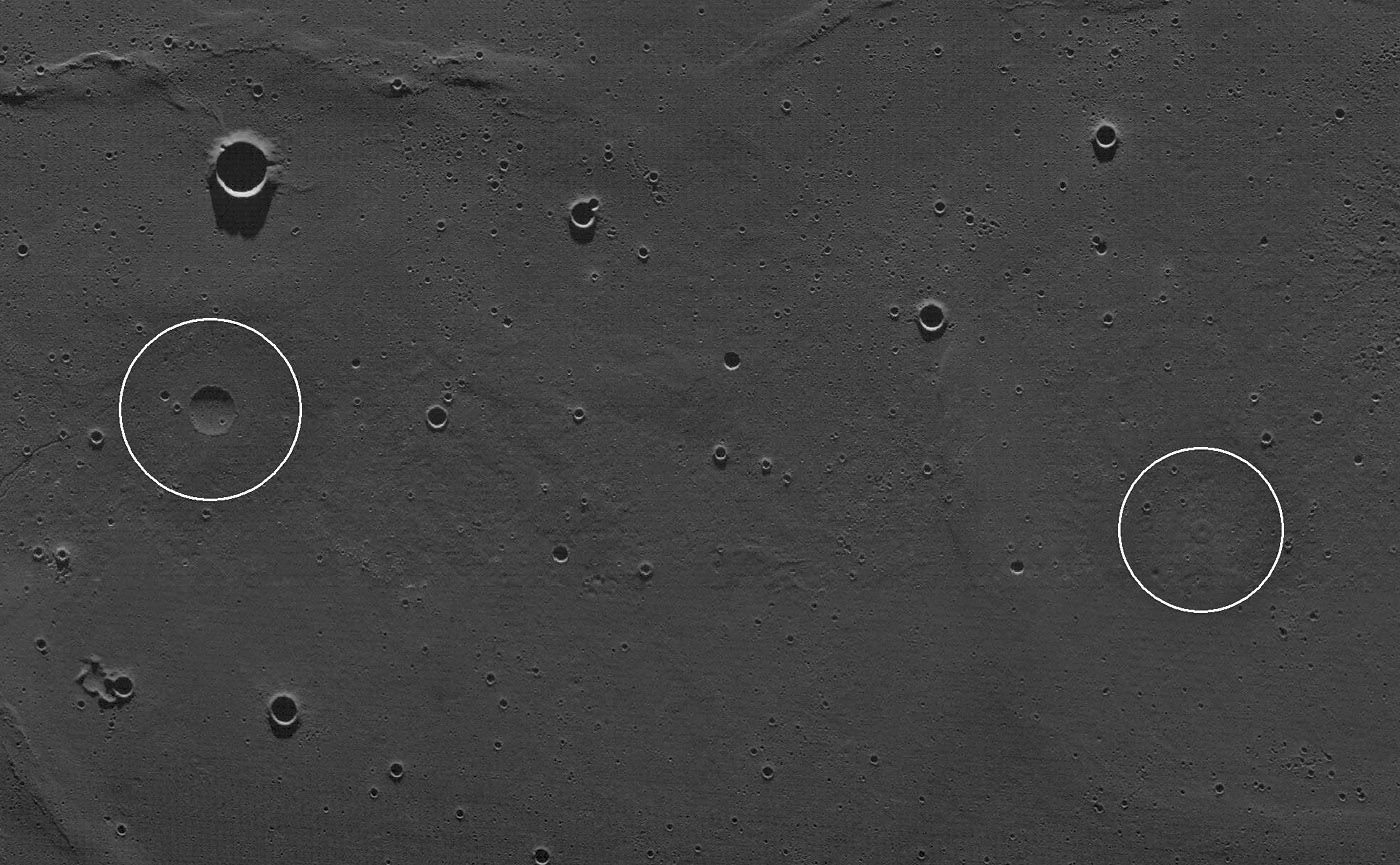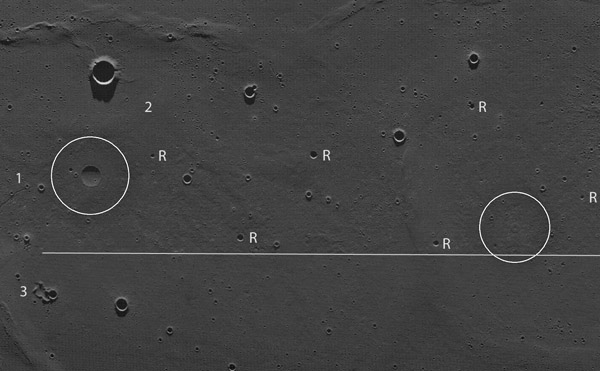January 27, 2011
Micro Features

north to the left LRO-WAC image processed by Brendan Shaw
Brendan processed LRO WAC images showing this area of Mare Imbrium just north of Helicon and LeVerrier.
There are a number of interesting small features to explore here, but first notice the broad scale difference in
surface smoothness. In the annotated image below a horizontal line is the boundary between rough textured
lava and a smoother surface below the line. Because this boundary is so straight it is probably a difference in
processing of the LRO image, but there do seem to be fewer craters below the line. If it is real it is the edge
between a younger lava unit and an older, rougher surface one. Nearly all of the interesting features here are
above the line. For example, Brendan circled two objects. To the left is a crater that doesn't look like the
normal impact craters. It has a very low rim and a shallow interior. Probably it is a normal impact crater that
was overwhelmed by lava flows. The second circle on the right marks a more peculiar feature. It is circular
with pit in its center - it looks like a squashed dome, or a Cheerio encrusted with lava. It also is similar to the
oddity discussed recently. It must be some sort of volcanic structure. Next topic. Do you notice the rimless
craters scattered across the image? There is one to the left of each "R" on the image below. These could be
collapse pits, as occur over voids created by buried lava tubes that drain their lava. Or they could be normal
impact craters that have been surrounded by later lavas that buried their bases and didn't quite overflow their
rims. The latter interpretation makes sense for a few, but I see at least six here. But Brendan's circled crater
could simply be the largest of such flooded craters.. The flooded craters labeled 3 are examples of lava flow
interactions with existing craters. So there is evidence for both of the interpretations. Finally, number "1" on
the image below indicates a short segment of a rille. Look closely at the area above the circle and you will
notice a very low ridge that continues the direction of the rille. This could be a surface expression of the
uncollapsed portion of the lava tube. I suppose that any piece of a mare looked at closely will show similar
bits of its history.
Chuck Wood

Related Links
Rükl plate 10
Yesterday's LPOD: The Moon is a Balloon
Tomorrow's LPOD: Mega-Megadomes
COMMENTS?
Register, Log in, and join in the comments.



